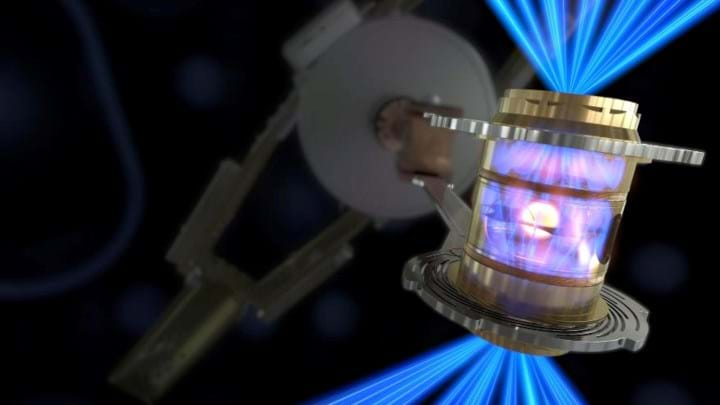US announces ‘major’ fusion breakthrough

RESEARCHERS at the US Department of Energy’s Lawrence Livermore National Laboratory (LLNL) have achieved a “major scientific breakthrough” that takes a step towards realising the clean and nearly unlimited fuel supply offered by fusion power.
Fusion is a potential source of clean energy that would generate electricity using heat produced by nuclear reactions. In contrast to nuclear fission, which generates heat by splitting atoms, fusion releases energy when atoms are merged. Once commercially realised it could transform global power generation and help to achieve a lower carbon economy.
Taking us closer to that realisation, the US researchers have for the first time demonstrated fusion ignition, with a reaction experiment generating more fusion energy than was delivered to the target by lasers. Mark Herman, Program Director for Weapons Physics and Design, said that 3.15 MJ of fusion energy was output, with a laser input of 2.05 MJ. It is worth noting that this input does not account for the energy required to power the lasers.
The milestone was achieved at the LLNL’s National Ignition Facility (NIF), which uses a process called inertial confinement fusion. US Department of Energy (DOE) Under Secretary of Nuclear Security Jill Hruby described the NIF as the “world’s largest and most energetic laser system”. Hruby explained that during experiments 192 high-energy lasers converge on a target “about the size of a peppercorn” and heat a fuel capsule of deuterium and tritium to more than 3,000,000°C, briefly simulating the conditions of a star.
The process fundamentally differs from more advanced magnetic fusion, as is being developed through tokamak technologies. However, LLNL Director Kim Budil said these different communities could “feed off each other” which will help to advance the field and technologies in addition to power plants.
The DOE officially announced the ignition breakthrough yesterday, which was made on 5 December. In the interim, the researchers worked to confirm the results and had the experiment peer reviewed.
“We have taken the first tentative steps in a clean energy source that could revolutionise the world,” said Hruby. Also Administrator of the National Nuclear Security Administration (NNSA), Hruby said the team at LLNL has opened a new chapter in the NNSA science-based stockpile stewardship programme, enabling the nuclear science organisation to study new regimes. This includes allowing the NNSA to probe the extreme conditions found at the centre of nuclear explosions.
Though the achievement was an important fundamental step towards an inertial confinement fusion power scheme, Budil acknowledged that there are still science and technology hurdles to overcome. Additional work she noted includes simplifying the process and making it more repeatable, and achieving ignition more than once in a day.
Budil recognised that commercialisation of fusion power is likely still decades away, but added that it isn’t five decades away, as is usually stated.
She said: “It’s moving into the foreground and probably with concerted effort and investment, a few decades of research on the underlying technologies could put us in a position to build a power plant.”
Other experts commented on the achievement, and the work still needed to further develop fusion technology.
Jeremy Chittenden, Professor of Plasma Physics at the UK’s Imperial College London, who contributed to NIF’s work, said this news “proves that the long sought-after goal, the ‘holy grail’ of fusion, can indeed be achieved”.
“To turn fusion into a power source we’ll need to boost the energy gain still further. We’ll also need to find a way to reproduce the same effect much more frequently and much more cheaply before we can realistically turn this into a power plant.”
Justin Wark, Professor of Physics at the University of Oxford, UK, specified that in addition to this “great progress”, work has to succeed in getting more energy out than is put in, to account for losses in generating the laser light for example. He added that while LLNL could in principle produce this sort of result once a day, a fusion plant would need to do so “ten times per second”.
“However, the important takeaway point is that the basic science is now clearly well understood, and this should spur further investment.”
Theoretical Plasma Physicist Robbie Scott said that this “momentous achievement” follows 50 years of laser fusion research and proves that it works. He added that next steps include demonstrating even higher fusion energy-gain, and further development of more efficient methods to drive the implosion. Scott is part of the UK Science and Technology Facilities Council’s Central Laser Facility Plasma Physics Group and contributed to this research.
LLNL said the ignition was made possible by collaborators in other US laboratories and government organisations, academic institutions, and industry partners, as well as international partners in the UK and France.
Recent Editions
Catch up on the latest news, views and jobs from The Chemical Engineer. Below are the four latest issues. View a wider selection of the archive from within the Magazine section of this site.




